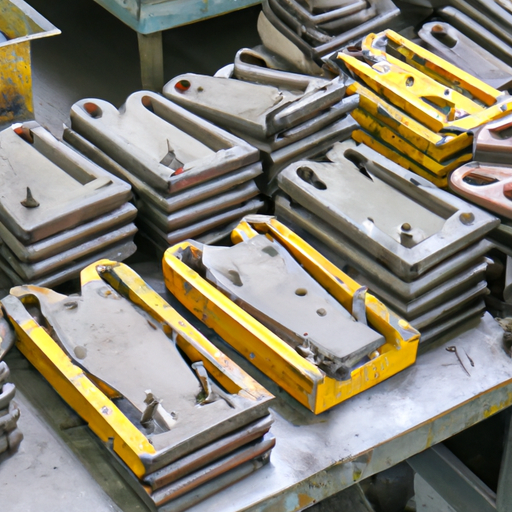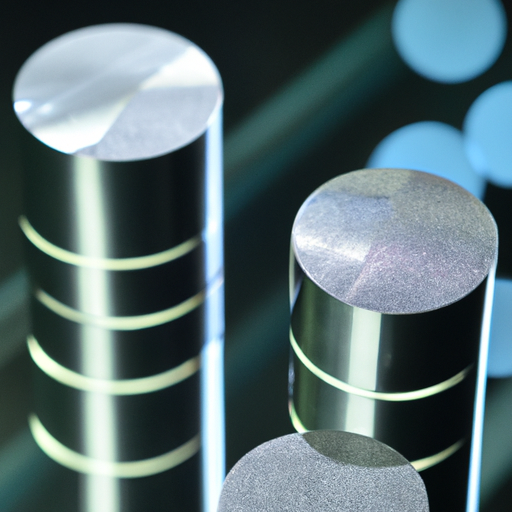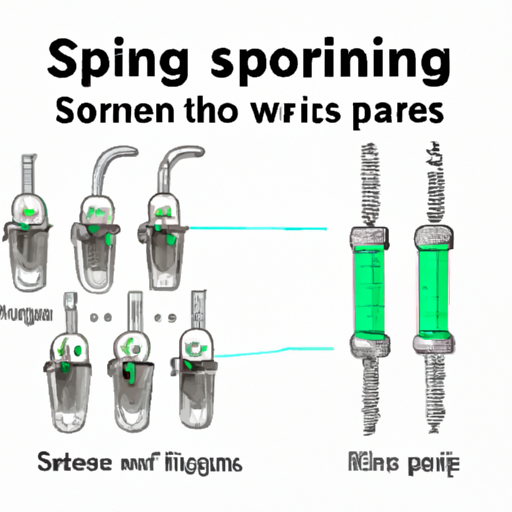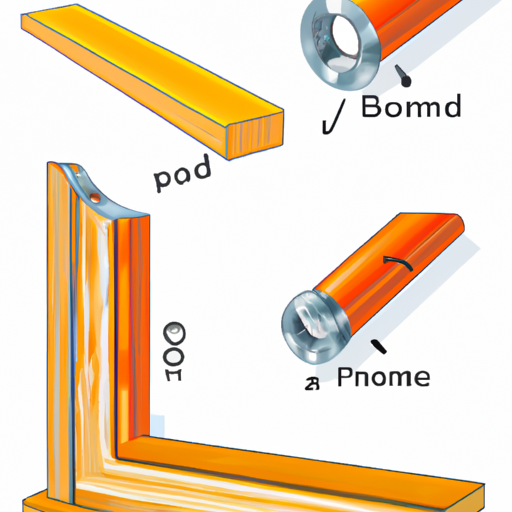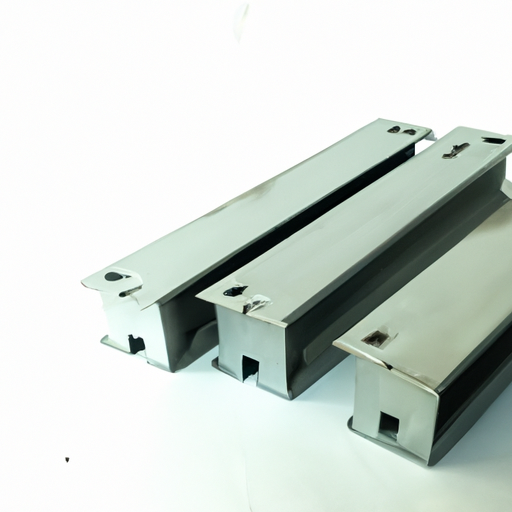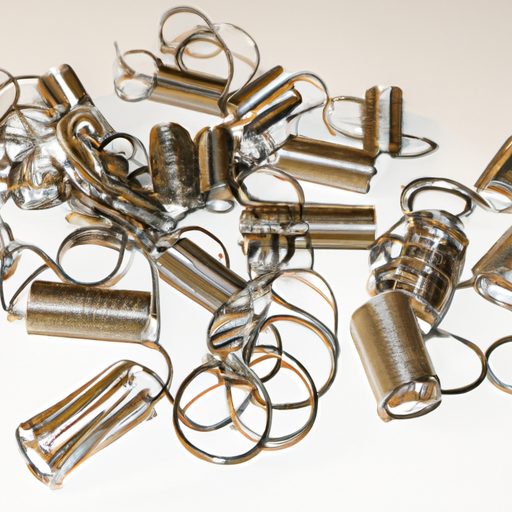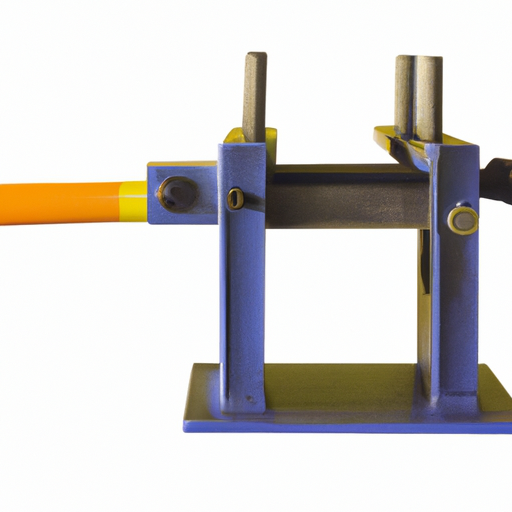The Production Process of the Mold Clamp Series
I. Introduction
Mold clamps are essential components in various manufacturing processes, particularly in the fields of injection molding and die casting. These devices secure molds in place, ensuring precision and stability during production. The importance of mold clamps cannot be overstated; they play a critical role in maintaining the integrity of the manufacturing process, which directly impacts product quality and operational efficiency. This blog post will provide an in-depth look at the production process of the mold clamp series, from design and engineering to distribution and supply chain management.
II. Understanding Mold Clamps
A. Types of Mold Clamps
Mold clamps come in various types, each designed to meet specific operational needs:
1. **Toggle Clamps**: These clamps utilize a lever mechanism to provide a strong clamping force. They are easy to operate and are often used in applications where quick access to the mold is necessary.
2. **Pneumatic Clamps**: Utilizing compressed air, pneumatic clamps offer rapid clamping and release, making them ideal for high-speed production environments. They are commonly used in automated systems.
3. **Hydraulic Clamps**: These clamps use hydraulic pressure to achieve a high clamping force, making them suitable for heavy-duty applications. They are often found in industries that require robust and reliable clamping solutions.
B. Applications of Mold Clamps
Mold clamps are utilized in various manufacturing processes, including:
1. **Injection Molding**: In this process, molten material is injected into a mold cavity. Mold clamps ensure that the mold remains securely closed during injection, preventing leaks and ensuring the final product's quality.
2. **Die Casting**: Similar to injection molding, die casting involves pouring molten metal into a mold. Mold clamps are crucial in maintaining the mold's integrity under high pressure.
3. **Other Manufacturing Processes**: Beyond injection molding and die casting, mold clamps are also used in processes such as stamping, forming, and assembly operations.
III. Design and Engineering Phase
A. Conceptualization
The production of mold clamps begins with a thorough understanding of market needs and customer requirements. This phase involves:
1. **Market Research**: Manufacturers conduct extensive research to identify trends, customer preferences, and competitive products. This information guides the design process.
2. **Customer Requirements**: Engaging with customers helps manufacturers understand specific needs, such as clamping force, size, and compatibility with existing machinery.
B. CAD Modeling
Once the conceptualization phase is complete, the design moves to the Computer-Aided Design (CAD) modeling stage:
1. **Software Tools Used**: Engineers utilize advanced CAD software to create detailed 3D models of the mold clamps. Popular tools include SolidWorks, AutoCAD, and CATIA.
2. **Prototyping and Simulation**: After modeling, prototypes are created to test the design's functionality. Simulation software can also predict how the clamp will perform under various conditions, allowing for adjustments before production.
C. Material Selection
Choosing the right materials is crucial for the performance and durability of mold clamps:
1. **Common Materials Used**: Mold clamps are typically made from high-strength steel, aluminum, or specialized alloys. The choice of material depends on the application and required strength.
2. **Considerations for Material Properties**: Factors such as tensile strength, corrosion resistance, and weight are considered during material selection to ensure the clamps meet operational demands.
IV. Manufacturing Process
A. Machining
The manufacturing process of mold clamps involves several machining techniques:
1. **CNC Machining**: Computer Numerical Control (CNC) machining is widely used for its precision and efficiency. CNC machines can produce complex shapes and maintain tight tolerances, which are essential for mold clamps.
2. **Traditional Machining Techniques**: In addition to CNC, traditional methods such as milling, turning, and drilling are employed to achieve the desired dimensions and surface finishes.
B. Fabrication
After machining, the components undergo fabrication processes:
1. **Welding**: For certain types of mold clamps, welding is necessary to join different parts together. This process requires skilled technicians to ensure strong and reliable joints.
2. **Assembly Techniques**: Once fabricated, the components are assembled. This may involve manual assembly or the use of automated systems, depending on the production scale.
C. Surface Treatment
To enhance durability and performance, mold clamps undergo various surface treatments:
1. **Coating Options**: Common coatings include powder coating, anodizing, and plating. These treatments improve corrosion resistance and provide a better aesthetic finish.
2. **Finishing Processes**: Final finishing processes, such as polishing or grinding, ensure that the clamps meet the required surface quality and dimensional specifications.
V. Quality Control
Quality control is a critical aspect of the production process:
A. Inspection Methods
Manufacturers employ various inspection methods to ensure the quality of mold clamps:
1. **Dimensional Inspection**: Using tools like calipers and micrometers, technicians measure the dimensions of the clamps to ensure they meet design specifications.
2. **Functional Testing**: Clamps are subjected to functional tests to verify their performance under operational conditions. This may include testing clamping force and durability.
B. Standards and Certifications
Adhering to industry standards is essential for quality assurance:
1. **ISO Standards**: Many manufacturers comply with ISO standards, which provide guidelines for quality management systems.
2. **Industry-Specific Certifications**: Depending on the application, additional certifications may be required, such as those for automotive or aerospace components.
VI. Assembly and Packaging
A. Assembly Line Process
The assembly of mold clamps can vary based on production scale:
1. **Manual vs. Automated Assembly**: Smaller production runs may rely on manual assembly, while larger operations often utilize automated assembly lines for efficiency.
2. **Ergonomics in Assembly**: Ergonomic considerations are important to ensure worker safety and comfort during the assembly process.
B. Packaging Solutions
Proper packaging is crucial for protecting mold clamps during transportation:
1. **Protective Packaging**: Clamps are often packaged with protective materials to prevent damage during shipping.
2. **Labeling and Documentation**: Clear labeling and documentation are essential for inventory management and customer information.
VII. Distribution and Supply Chain Management
A. Logistics Planning
Efficient logistics planning is vital for timely delivery:
1. **Transportation Methods**: Manufacturers must choose appropriate transportation methods, such as trucking or shipping, based on delivery timelines and costs.
2. **Inventory Management**: Effective inventory management ensures that the right amount of product is available to meet customer demand without overstocking.
B. Customer Delivery
The final step in the production process is delivering the product to customers:
1. **Order Fulfillment**: Timely order fulfillment is critical for customer satisfaction. Manufacturers must have systems in place to track orders and manage deliveries.
2. **After-Sales Support**: Providing after-sales support, including installation guidance and troubleshooting, enhances customer satisfaction and loyalty.
VIII. Conclusion
In summary, the production process of mold clamps involves a series of well-coordinated steps, from design and engineering to manufacturing, quality control, assembly, and distribution. As technology advances, the mold clamp manufacturing industry is likely to see trends such as increased automation, the use of advanced materials, and a greater emphasis on sustainability. Continuous improvement in production techniques will be essential to meet the evolving demands of the manufacturing sector and ensure the highest quality products for customers.
IX. References
A comprehensive list of references, including industry publications, technical manuals, and academic journals, can provide further insights into the production process of mold clamps and the latest trends in manufacturing technology.

